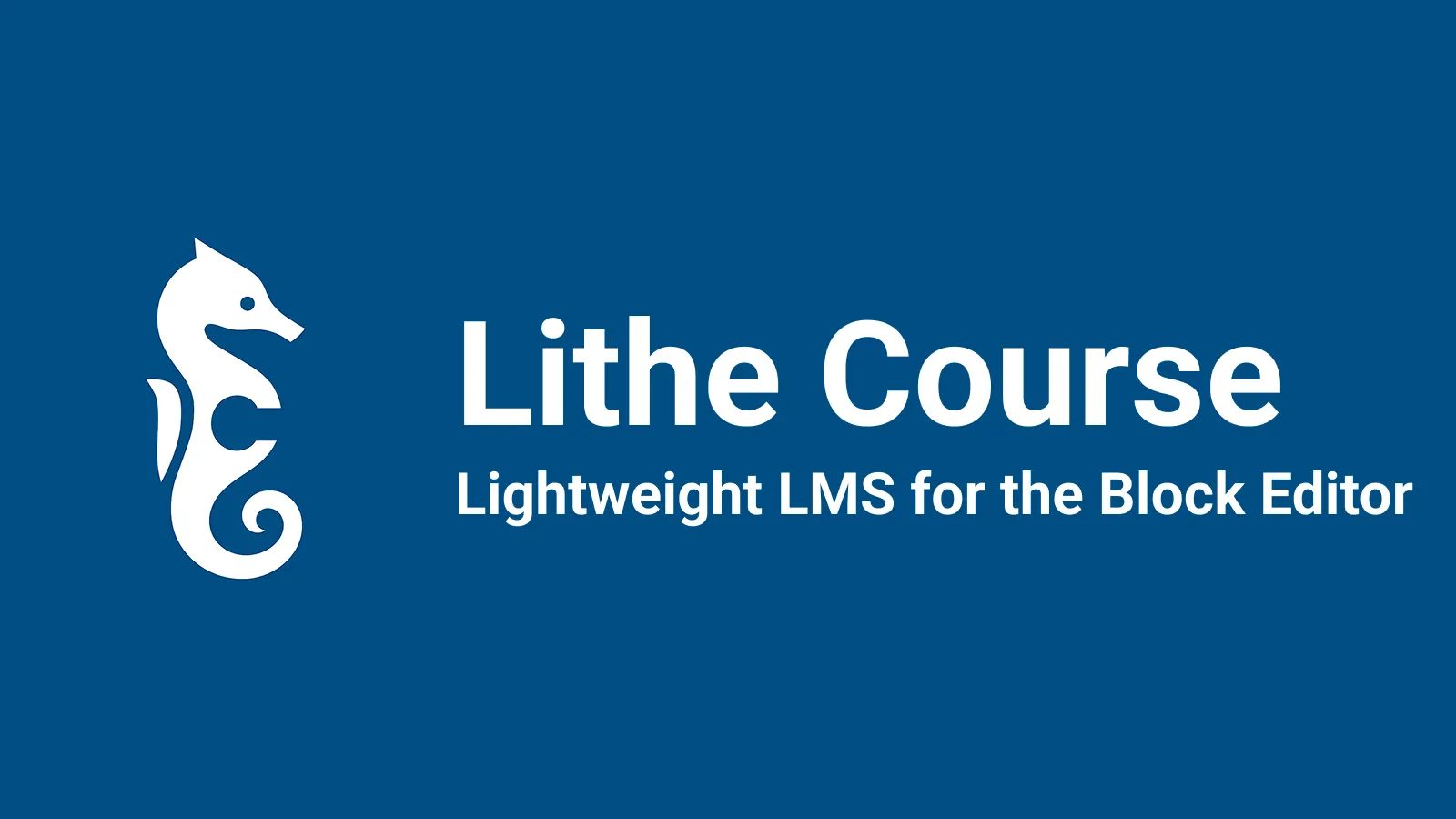
Introducing Lithe Course: A Lightweight WordPress LMS Plugin
Discover Lithe Course, a fast and lightweight Learning Management System plugin for WordPress that integrates seamlessly with Gutenberg and block themes.
I’ve been deeply involved in WordPress development and online education for years, and I’m excited to introduce Lithe Course - a Learning Management System plugin that’s designed to be clean, lightweight, and simple.
What is Lithe Course?
From the beginning, my goal was to create something that’s “clean,” “lightweight,” and “simple.”
I didn’t want too many complex features that users wouldn’t know how to use.
Therefore, I built it deeply integrated with the block editor,
I wanted it to integrate naturally with WordPress.
So I set several conditions when developing this plugin:
- No complex settings pages: Everything is integrated into the Course page
- No custom programming: Everything uses WordPress’s built-in components
- Block editor integration: Users can edit templates through the Block Editor
How to Use Lithe Course?
As I mentioned, I wanted it to be simple. You can install it directly from the WordPress plugin repository.
After downloading and activating, you’ll find a new post type: Course.
No complex setup - that’s it!
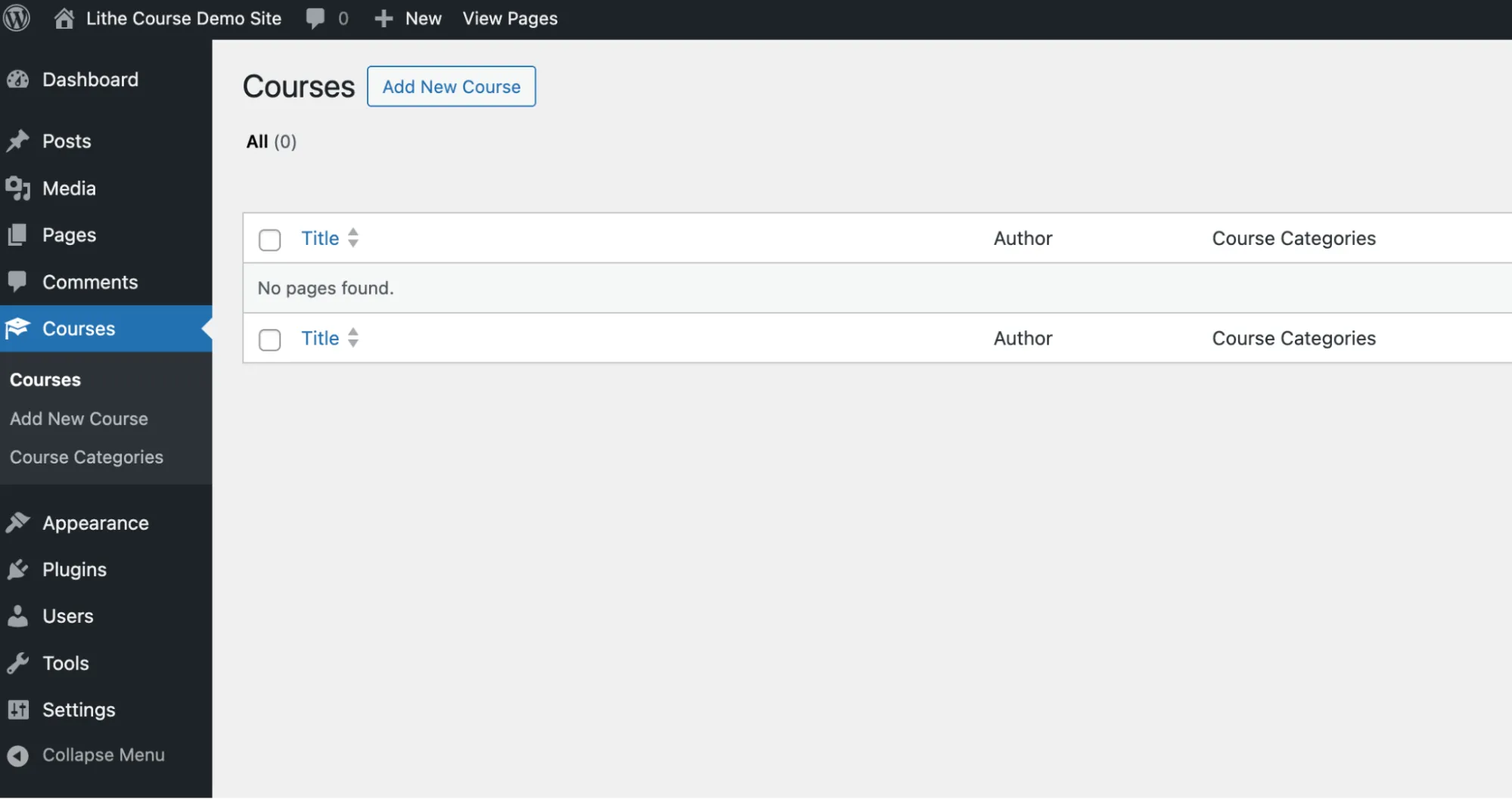
How to Add a Course
The first step is just like adding a post - you can click “Add New Course”
After adding, besides native content like Featured Image, Status, etc.,
You’ll have a Title and can use Blocks to create a detailed course description
What’s different is there are several course-specific settings
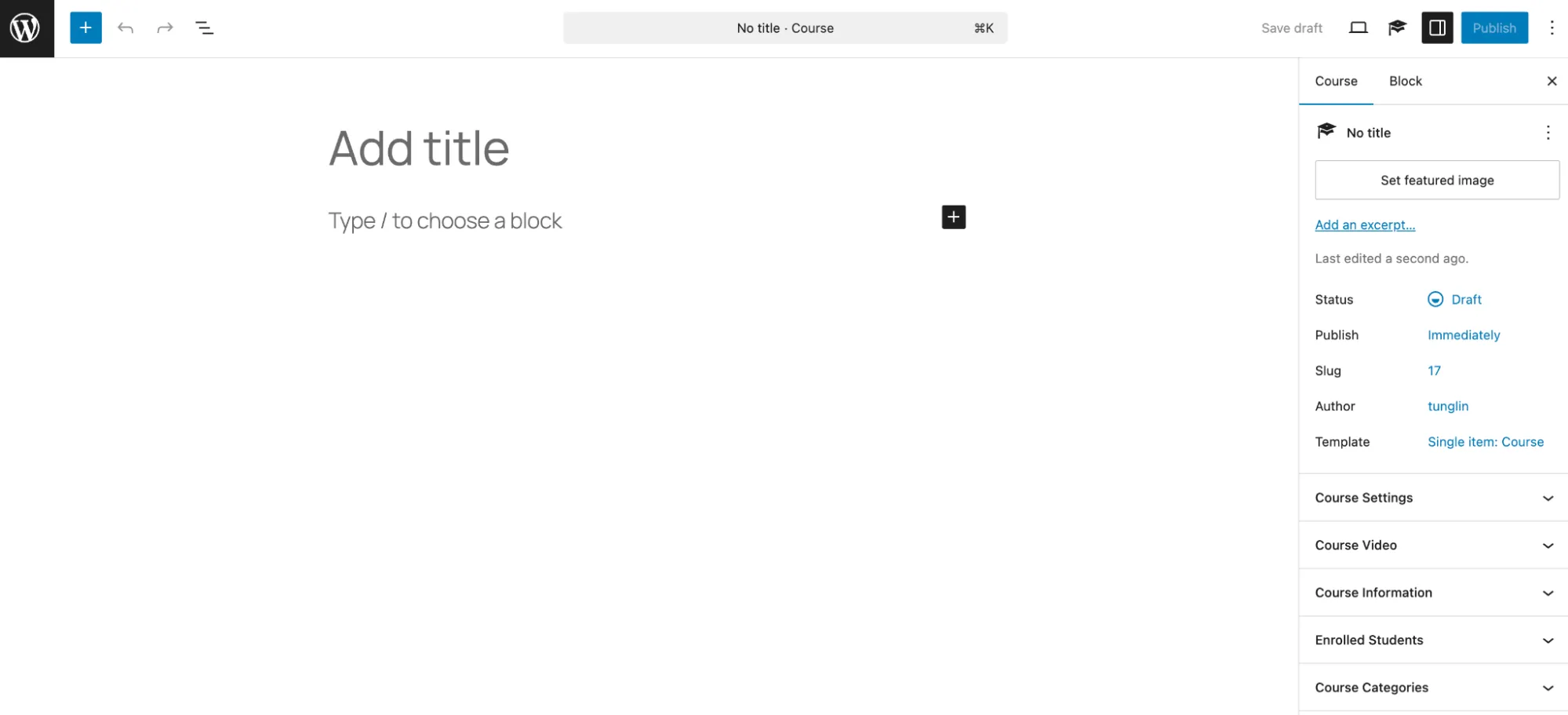
Each course can have different settings, including:
- Course Settings: Controls whether the course is public (no registration required) or requires registration
- Course Video: The course introduction video
- Course Information: All course metadata is here, including Features, What you will learn, Who is this course for, Prerequisites
- Enrolled Students: You can see which accounts have registered for this course
- Course Categories: Same as post categories
It’s very intuitive to use - basically, you’ll know how to use it at first glance
Except for Enrolled Students, you’ll need to register once to see the effect
Adding and Managing Course Content
You can find a new course structure settings tab next to the settings.
The course structure design is three-tiered:
- Course
- Module: Pure text course modules
- Lesson: Main individual course content
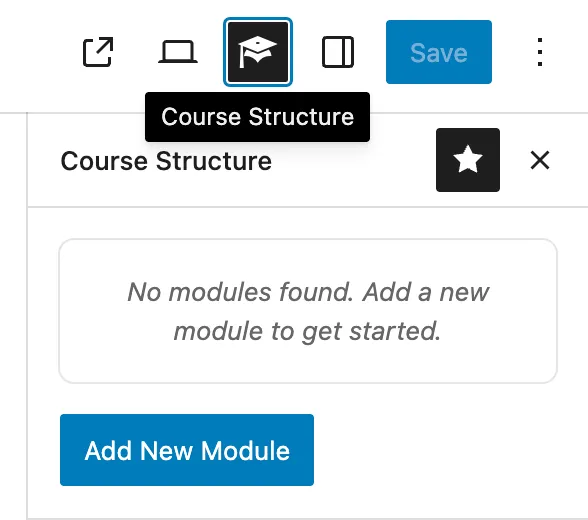
A course should have at least one Module and one Lesson.
You can quickly click the add button to add modules and course names.
You can even use Drag and Drop to change the course order.
The final result will display as shown below:
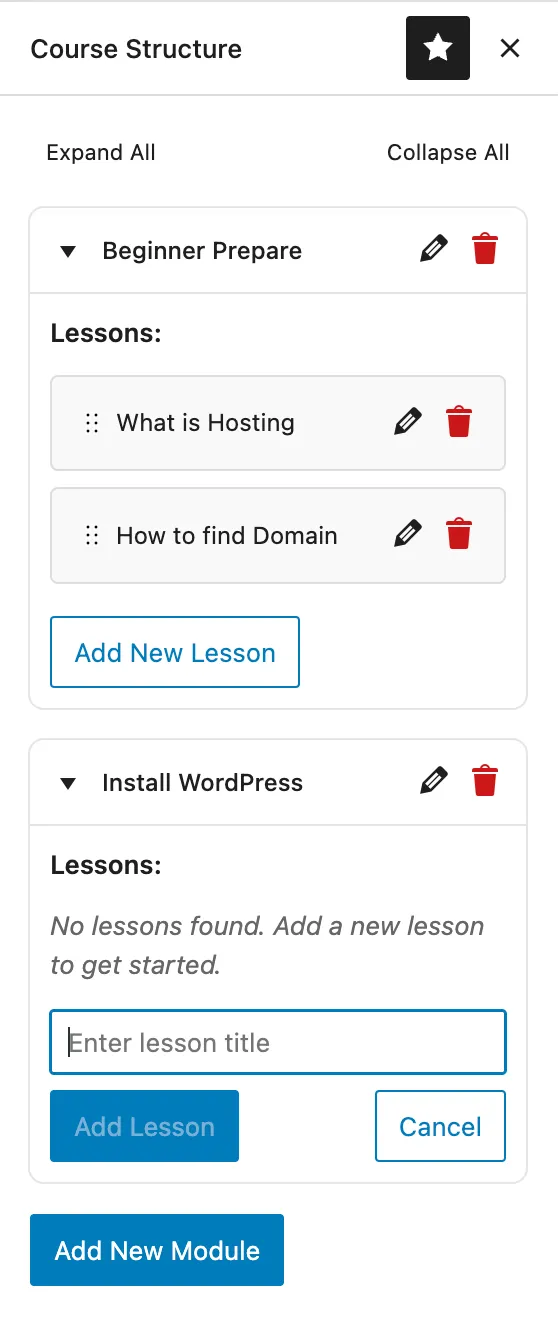
Editing and Deleting Modules and Lessons
Modules only provide text display functionality. You can click the pencil icon next to it to edit the course module name.
Click the trash icon to delete the course module.
Lessons are different - they are a Post Type.
You can click the trash to delete the Lesson.
However, clicking the pencil icon takes you to the Lesson editing page.
After entering the editing page, you can add content here.
The way to add content is also very WordPress-like, using blocks.
Don’t think too complicated - just like writing a post!
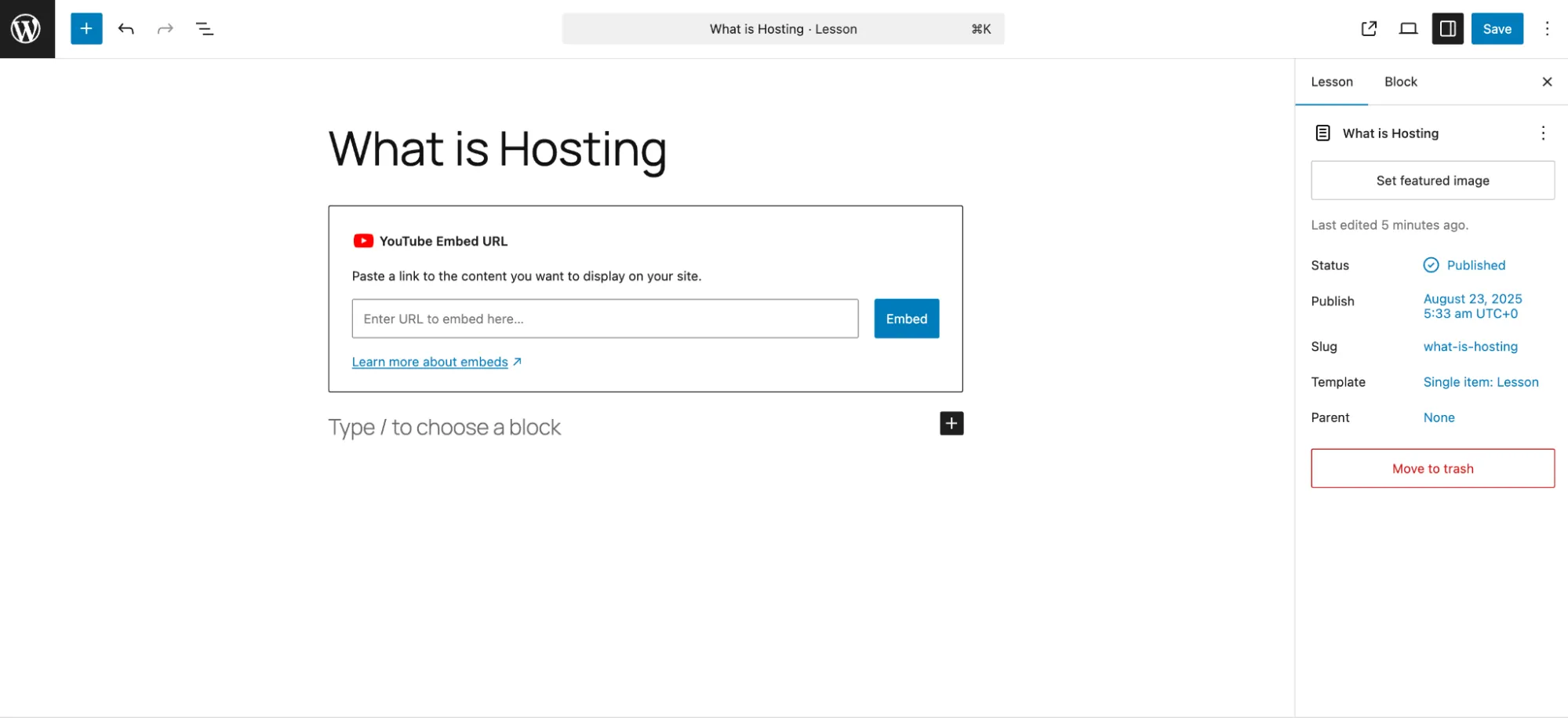
After saving, I recommend clicking the browser’s back button to return to the Course editing page.
I haven’t thought of a good way to go back - suggestions are welcome.
If you click the WordPress icon, it will go to the Lesson list, which might be confusing.
So returning to Course editing is currently what I think is best.
How Does Lithe Course Display on the Frontend?
After completing the backend course setup, how do we display content on the frontend?
Lithe Course is built primarily for Block Themes, so you must first ensure you’re using a Block Theme.
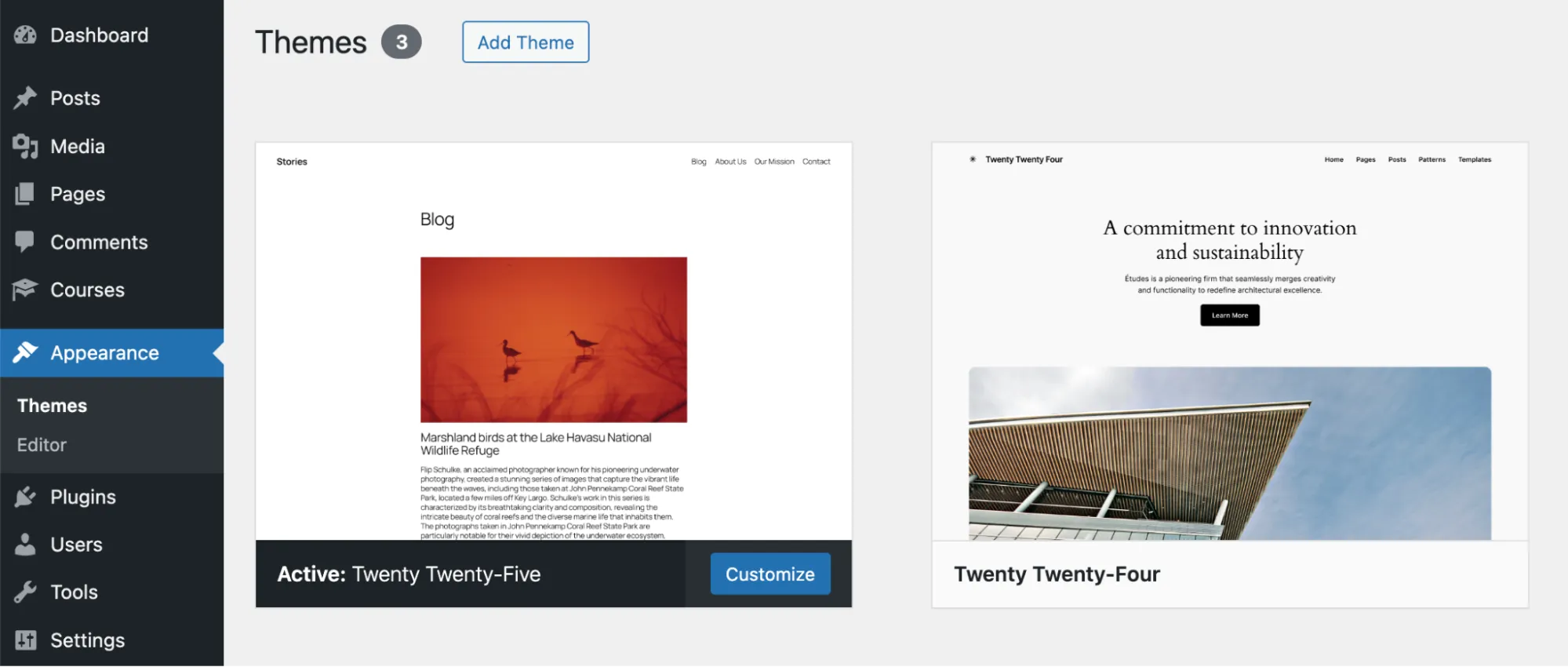
Lithe Course has two Post Types: Course and Lesson.
Go to Editor > Templates to edit templates.
The main ones you’ll use are:
- Single Item: Course
- Single Item: Lesson
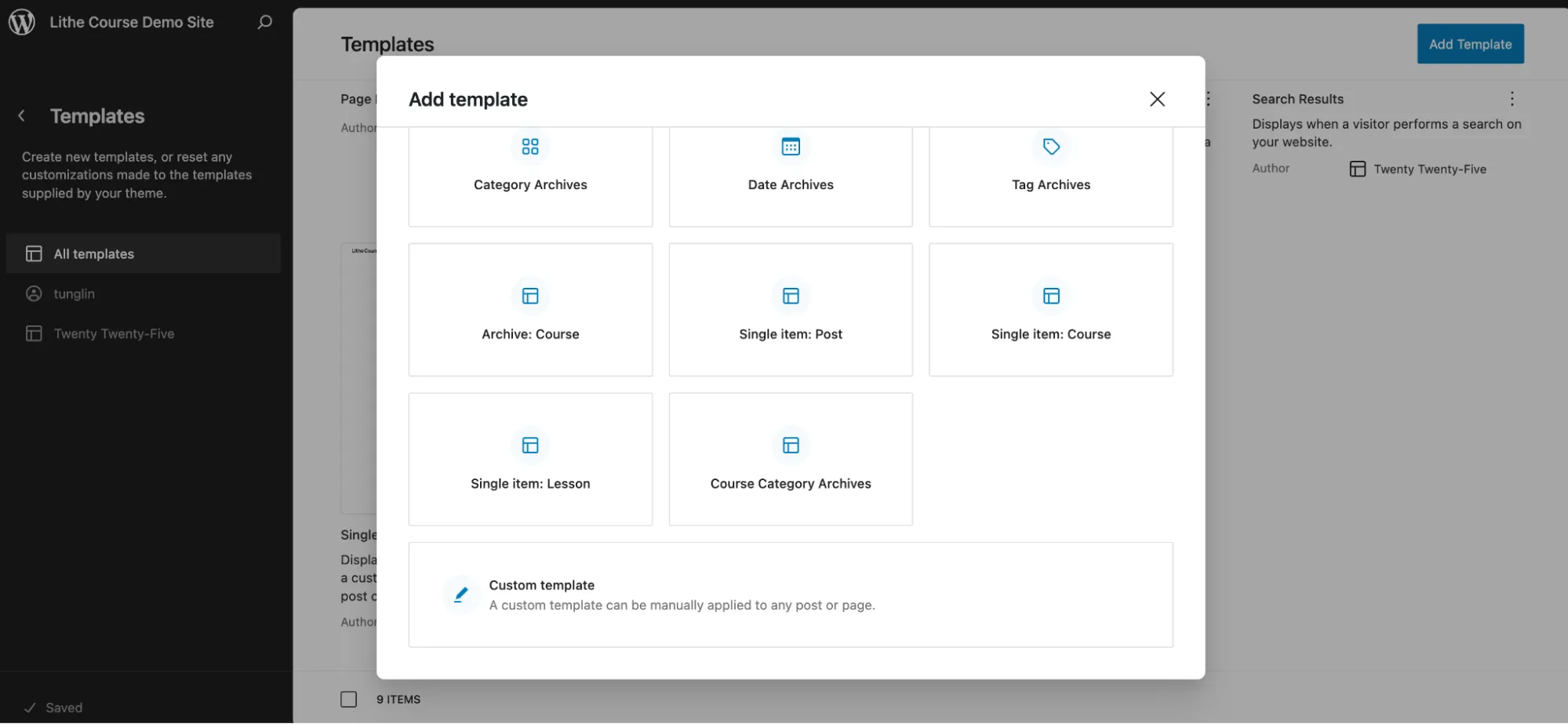
Adding Single Item: Course
Choose “For all items” to create a content template that applies to all courses
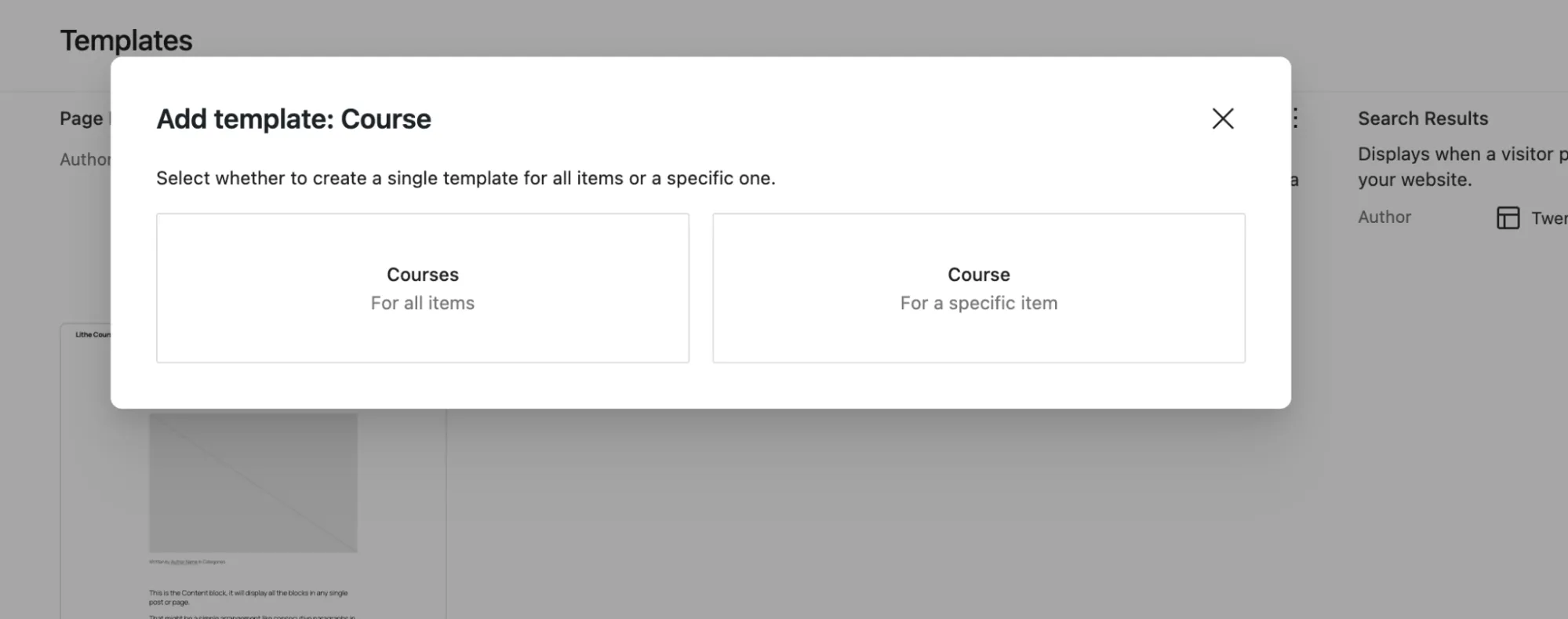
Enter the Template editing page, you can click + in the top left corner
Find Patterns where you can add Header and Footer
More importantly, you can find Lithe Course Patterns
Choose the second one to quickly insert the Course Pattern into the Template.
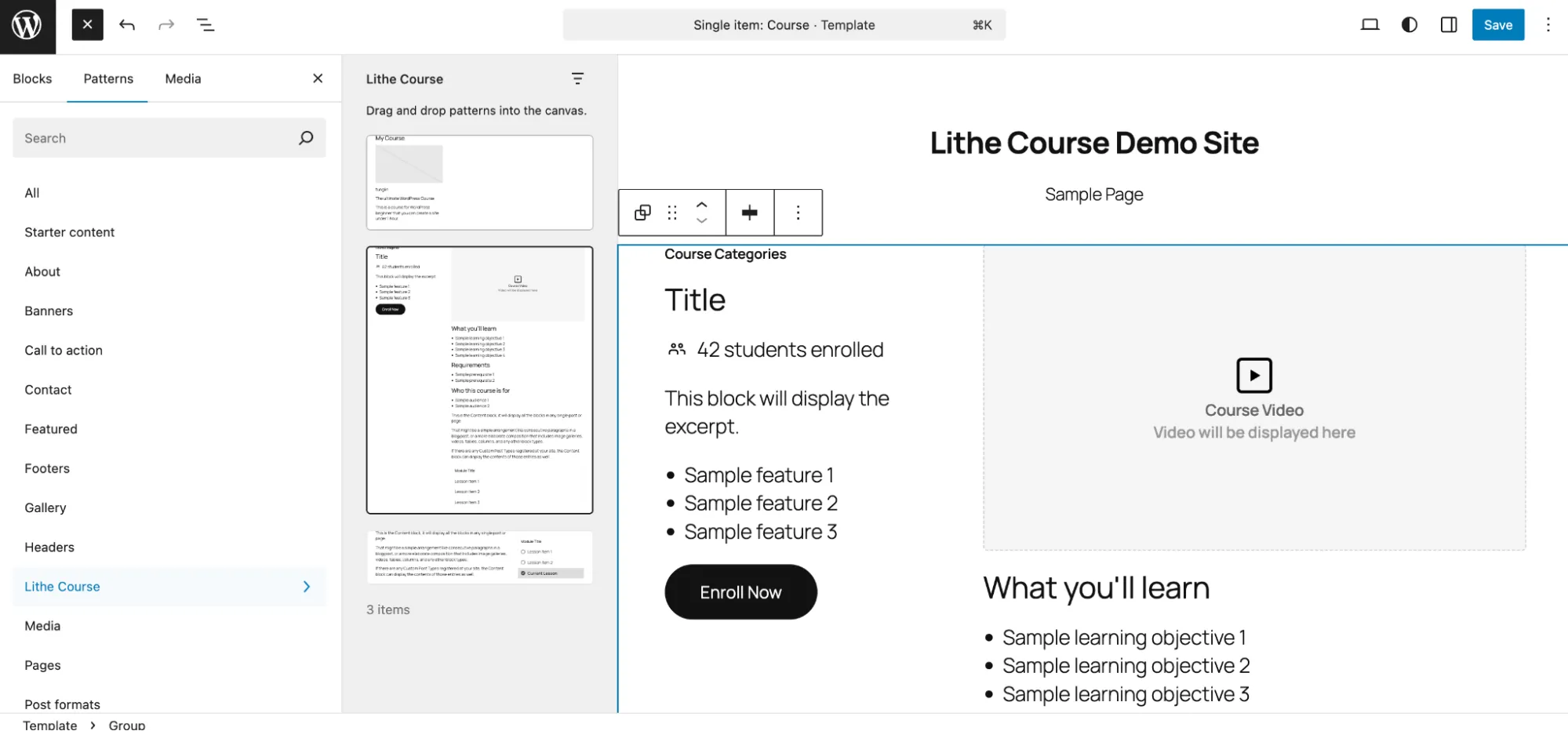
All Courses are built using built-in blocks and Lithe Course blocks.
All blocks used can be found in the block editor.
And you can arrange them according to your needs.
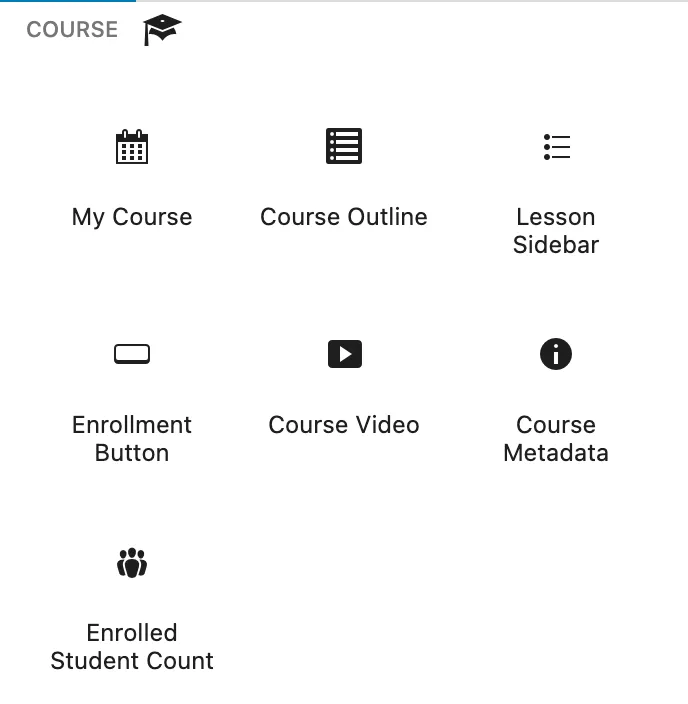
Lithe Course blocks used in Course:
- Course Outline: Lists all courses
- Course Video: Course video introduction
- Course Metadata: Course information
- Enrollment Button: Registration button
- Enrolled Student Count: Number of enrolled students
WordPress built-in blocks used in Course:
- Title: Course title
- Excerpt: Course brief description
- Course Category: Course category
- Course Content: Course content
Adding Single Item: Lesson
You can add Single Item: Lesson in Editor > Templates
And find the Lesson layout in Patterns.
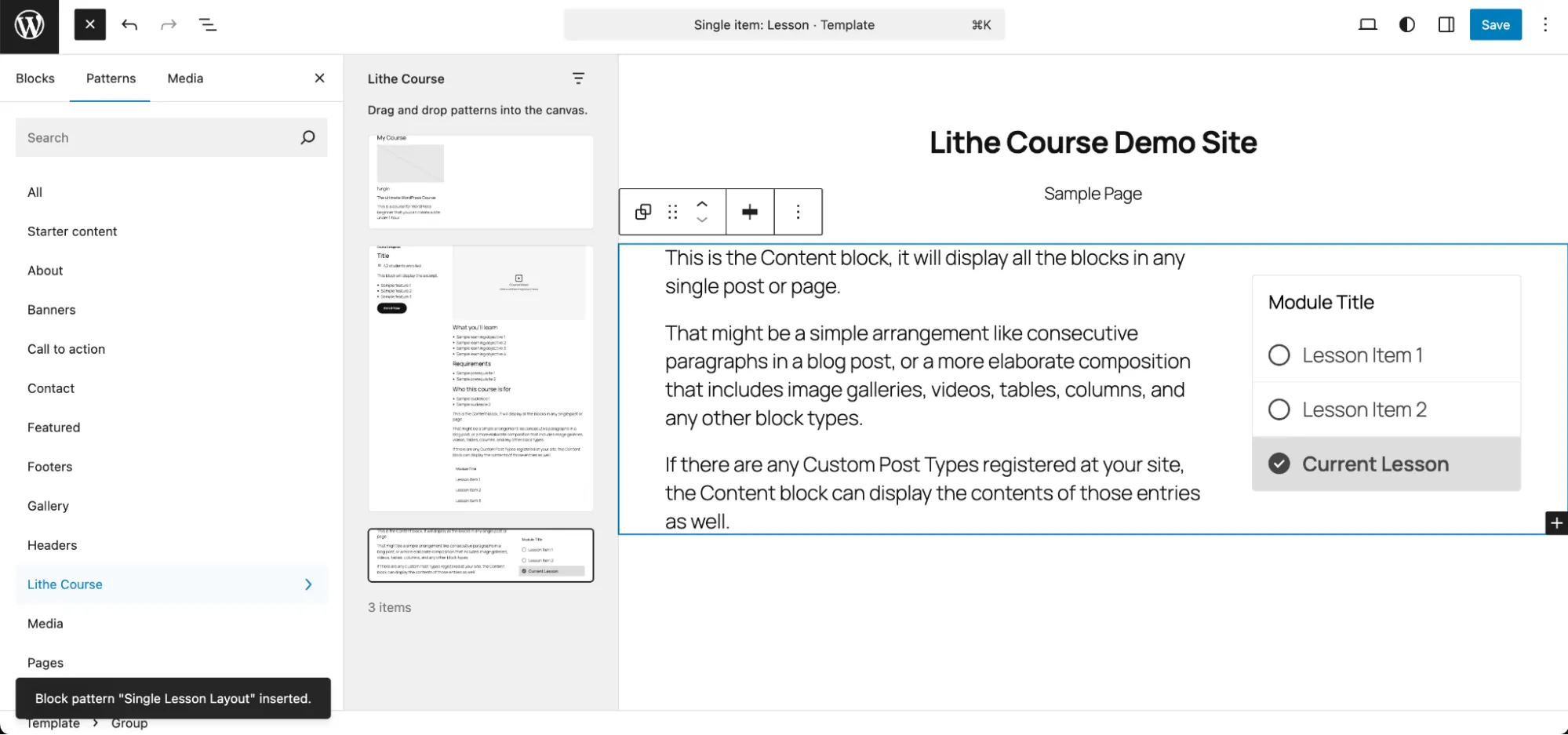
Why Choose Lithe Course?
Lithe Course stands out because it’s:
- Lightweight: Minimal impact on site performance
- Simple: Easy to use for beginners and experts alike
- Modern: Built for today’s WordPress ecosystem
- Integrated: Works seamlessly with Gutenberg and block themes
Whether you’re a course creator, educator, or developer building client sites, Lithe Course provides the perfect balance of functionality and simplicity.
Ready to transform your WordPress site into a learning platform? Lithe Course makes it simple, fast, and powerful.